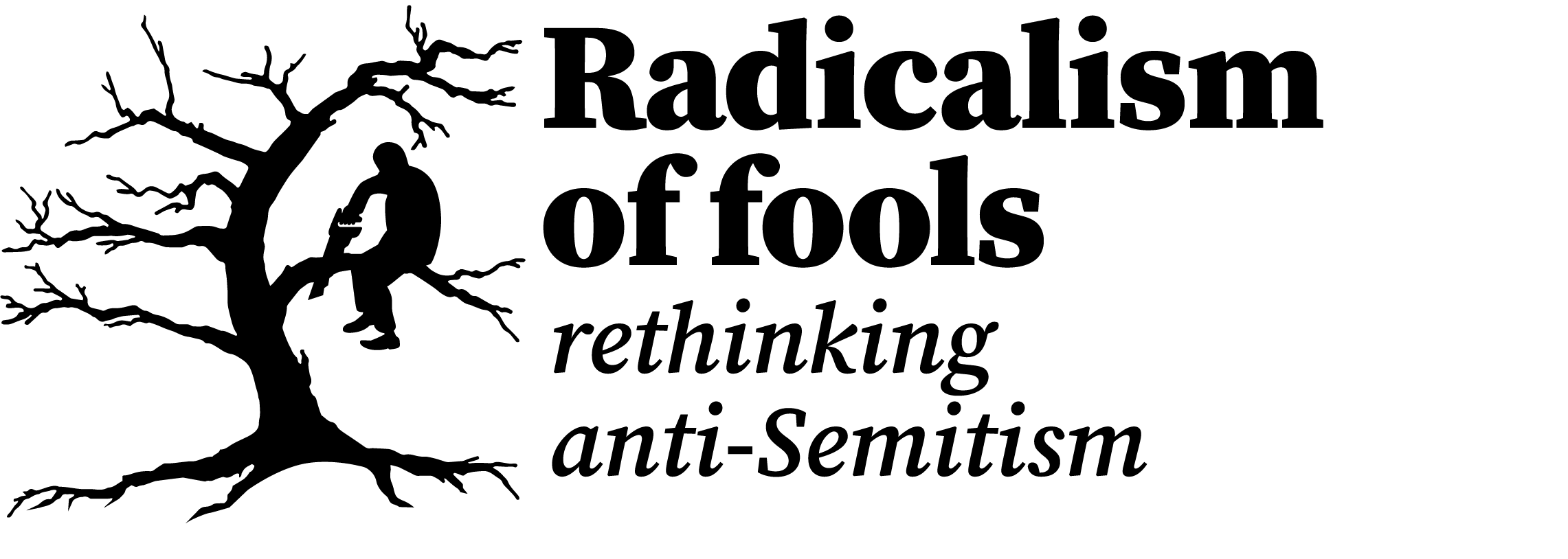I have belatedly come to the conclusion that the near universal consensus that anti-Semitism can be reduced to a form of hatred against Jews is wrong. Although hatred is a constituent part of anti-Semitism it is much more than that.
The idea of anti-Semitism as hatred is shared by a wide range of authorities. For example, the first sentence of the IHRA definition of anti-Semitism, the most widely accepted, states that “Antisemitism is a certain perception of Jews, which may be expressed as hatred toward Jews”. And the ADL, the most high-profile American organisation dedicated to opposing anti-Semitism, describes its mission as “Fighting Hate for Good®” (The ® sign, indicating a registered trademark, is an unintentionally comic touch).
Often the idea of hatred is used alongside the term ‘oldest’ or ‘longest’. Robert Wistrich , one of the world’s leading scholars on anti-Semitism, described it as the “longest hatred”. Many have followed his example. I have long argued against this notion on the grounds that animosity to Jews changed its character fundamentally in the late nineteenth century. That is when it became a form of racial thinking rather than a manifestation of Christian religious antipathy to Jews. Although Jews are the objects of both there are important differences. For one thing, as George Mosse pointed out, Christian theology never advocated the extermination of the Jews (Toward the Final Solution, p123). It instead supported their exclusion from society as living witnesses to the killing of Jesus.
However, I have come to the conclusion that the ‘hatred’ part of the formulation is as problematic as the ‘oldest’ part. Anti-Semitism as a racial ideology is both relatively new in historical terms and more than a hatred. It embodies the idea that Jews represent an evil principle in the world (Mosse p103).
One reason to reject the description of anti-Semitism as merely a hatred is that it makes it difficult to distinguish it from other forms of racial thinking or indeed bigotry more generally. The only, or at least the main thing, that differs in this limited view is the object of that hatred. From its perspective there is hatred against Jews, black people, women, gays and so on. They are all regarded as broadly the same phenomenon even if they are directed at different victims. The unique characteristics of anti-Semitism are defined away in advance by its reduction to a hatred.
Another drawback is that the notion of hatred cannot explain the particularly visceral character of anti-Semitism. Although Jews constitute a tiny proportion of the world’s population, and Israel is a tiny state in global terms, it has the capacity to mobilise frenzied hostility. As Hannah Arendt argues in The Origins of Totalitarianism (first published in 1951): “in the final stages of disintegration, antisemitic slogans provided the most effective means of inspiring and organizing great masses of people for imperialist expansion and destruction of the old forms of government” (Penguin edition, p12). Hostility to Jews lends itself to becoming an instrument for political mobilisation of the worst kind.
It seems to me, as I have argued for a while on this site, that the racial notion of Jews as a principle of evil in the world is central to understanding anti-Semitism. As Jean-Paul Sartre, the leading French existentialist thinker, argued: “Anti-Semitism is thus to be seen at bottom a form of Manichaeism. It explains the course of the world by the principle of Good with the principle of Evil. Between these two principles no reconciliation is conceivable, one of them must triumph and the other by annihilated”. Anti-Semite and Jew, P40-41.
Anti-Semitism thrives at times when many are pre-disposed to see the world in simple binary terms (why this happens at particular times is a question for another day). That is with unalloyed good on one side and absolute evil on the other. Under these circumstances Jews suffer a process which is far more thoroughgoing than scapegoating. They are seen as the personification of contemporary evils whether they are perceived to be communism, financial capitalism or modernity. Jews have been viewed as the source of all these phenomena at different times.
The notion of Jews as embodying evil helps make clear the commonality between traditional anti-Semitism and “new anti-Semitism” represented by the visceral hostility to Israel. Since 1967 the Jewish state has increasingly come to be seen as the archetype of the malevolent spirit of civilisation and colonialism. It is the projection of allegedly negative features on to Jews which it shares with older forms of anti-Semitism. Antipathy to Jews becomes a cultural code for broader forms of discontent.
It remains true that anti-Semitism can include elements of discrimination, prejudice and hatred. Conspiratorial thinking is also central to the anti-Semitic worldview.
But at root the defining feature of anti-Semitism is its view that Jews are the personification of the world’s evils.
From that premise it becomes possible to draw the conclusion that the only way to free the world is to ‘liberate’ it from the presence of Jews. That explains why anti-Semites can ultimately draw the conclusion that eliminating the Jews is the only way for the supposedly virtuous to achieve redemption.
It is this identification of Jews as the essence of evil which marks anti-Semitism out from other forms of racial thinking.
PHOTO: "Jude, Gwiazda Dawida, Star of David, Davidstern, 1940-1944 with transparent background" by Jacek Proszyk is licensed under CC BY-SA 4.0.
The aftermath of the 7 October Hamas pogrom in Israel has made the rethinking of anti-Semitism a more urgent task than ever. Both the extent and character of anti-Semitism is changing. Tragically the open expression of anti-Semitic views is once again becoming respectable. It has also become clearer than ever that anti-Semitism is no longer largely confined to the far right. Woke anti-Semitism and Islamism have also become significant forces.
Under these circumstances I am keen not only to maintain this site but to extend its impact. That means raising funds.
The Radicalism of fools has three subscription levels: Free, Premium and Patron.
Free subscribers will receive all the articles on the site and links to pieces I have written for other publications. Anyone can sign up for free.
Premium subscribers will receive all the benefits available to free subscribers plus my Quarterly Report on Anti-Semitism. They will also receive a signed copy of my Letter on Liberty on Rethinking Anti-Semitism and access to an invitee-only Radicalism
of fools Facebook group. These are available for a 17% discounted annual subscription of £100 or a monthly fee of £10 (or the equivalents in other currencies).
Patron subscribers will receive the benefits of Premium subscribers plus a one-to-one meeting with Daniel. This can either be face-to-face if in London or online. This is available for a 17% discounted annual subscription of £250 or a monthly fee of £25 (or the equivalents in other currencies).
You can sign up to either of the paid levels with any credit or debit card. Just click on the “subscribe now” button below to see the available options for subscribing.
You can of course unsubscribe at any time from any of these subscriptions by clicking “unsubscribe” at the foot of each email.
If you have any comments or questions please contact me at daniel@radicalismoffools.com.

